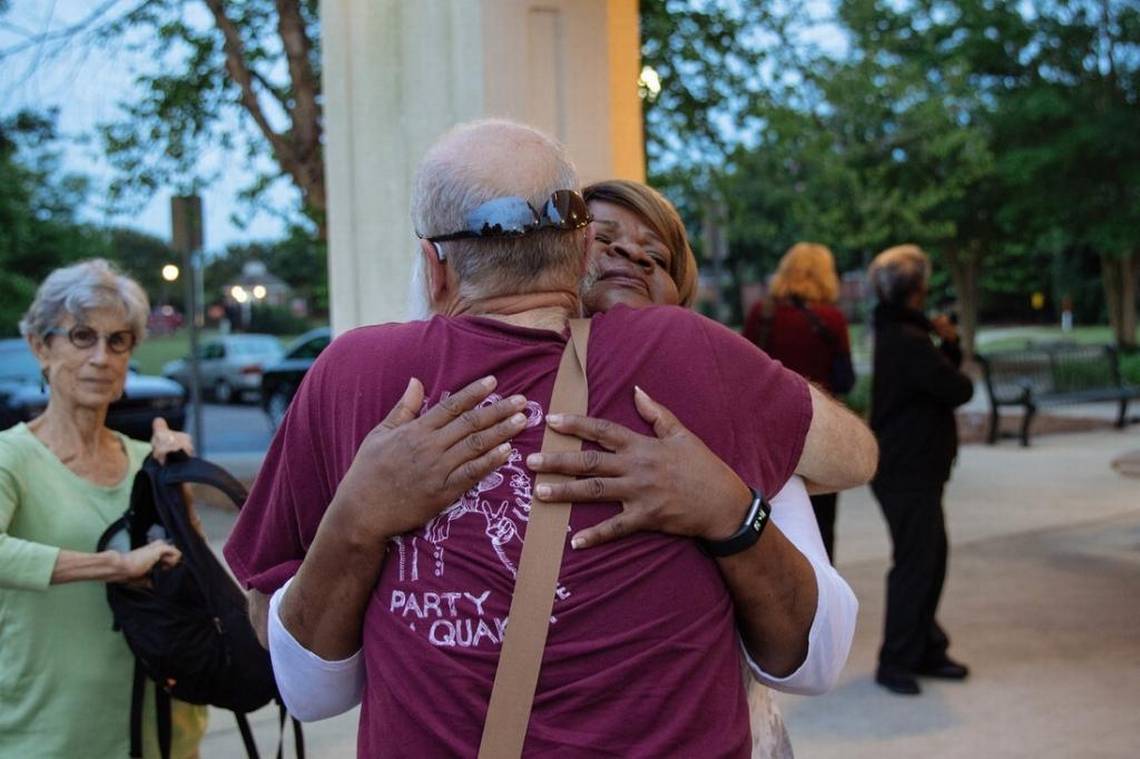Are we a New South? Sadly, no.
Reprinted from the Charlotte Observer, July 4, 2017. Rabbi Schindler serves as Contributing Editor, the Observer editorial board. Photo by Sarah Ann Photos.
Last month, I joined a Deep South pilgrimage with Mayfield Memorial Baptist Church (a predominantly African-American church) and Myers Park Baptist Church (a predominantly white church). I had been on a similar journey just two months before with a group of Jewish women yet felt compelled to see that history through the eyes of others whose backgrounds differed sharply from my own.
As we drove across the path of the Selma-to-Montgomery Voting Rights March, Dr. Peter Wherry, pastor of Mayfield, asked us to reflect on the fact that every tree could have been the execution place of an African-American soul, every stream could be where someone fled seeking to clear the scent to avoid police and their dogs, and every field could have been worked without wages by a sharecropper. For my African-American travel partners, these places were not simply history, but part of their memories and identities.
That was the “Old South” – built upon a system of slavery and then sustained by dehumanization and terror. Yet, our region calls itself the “New South.” On the trip I questioned whether we are.
Emily Zimmern, former president of Levine Museum of the New South, shared with me the meaning of this term: “The New South is a time: from the end of the Civil War until the present. The New South is a place: the Southeastern U.S. And the New South is an idea: one of continual reinvention.”
When the concept was first coined, we were talking about remaking society in terms of business as we moved from field to factory and later to finance. Today we are talking about remaking race relations.
Are we a New South?
You don’t need to travel to Selma to answer that question; you can simply travel to uptown Charlotte to see the Levine Museum exhibit entitled “K(NO)W Justice K(NO)W Peace.” Story after story is told of a family losing a loved one, many of whom were going about their daily routine when racial fear tainted the lens through which someone saw their actions and led to their tragic death.
American poet Maya Angelou wrote “History, despite its wrenching pain, cannot be unlived, but if faced with courage, need not be lived again.”
The Opportunity Task Force that studied our city’s failures in providing paths for upward economic mobility for those living in poverty pointed to segregation by race and income as the issue at the core of all others. It is a root cause. People of color and those who are white are separated – in schools, in neighborhoods, in the history they tell, in their daily realities, in the struggles they face and in the opportunities they have. The report sharing 21 strategies requires work by each one of us to truly create a New South in Charlotte.
We need to have hard conversations about racial realities and work together to change unfair systems. Consider making a visit to Levine Museum with a racially diverse group to start that conversation now. Consider engaging your civic group or congregation with one of the 21 strategies of the Opportunity Task Force.
Are we a New South? Sadly, no. The present still stands solidly on systemic racial inequities inherited from our past. Only racial healing will remake our society. It starts with each of us.



No Comments